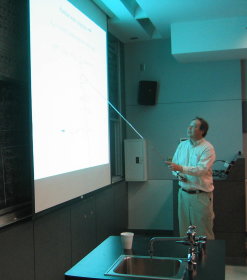Research Blogging
Time to talk briefly about other uses of blogging. Some time ago I spoke about the idea of using blogging as a sharper tool for exchanging and even developing research ideas. The conversation about the suggestion degenerated into vapour, at some point, and having floated the idea and learned from the conversation, I left it alone. In public at least.
In private, I continued. The fact is that I have other blogs on the go. I’d like to tell you about one of them, since it might be a useful tool for you too. The way I use it is simple. I run my “lab” with it. It’s my virtual lab-space. I have about five students working with me, and a million and one projects, and not enough hours in the day. The students all are working on several projects with me, with each other, and alone…. but all under the umbrella of being part of my little “subgroup” of the larger high energy theory group here at USC. I want us all to have conversations, point at new papers, throw out ideas, show partial computations to each other (and definitely to me) for comment, share drafts of papers with each other, etc.
So far so standard. Normally, this is all done with emails back and forth, one on one conversations, etc. Sometimes those conversations can be supplemented by one or other person from the group (me, or anyone else) dropping in and setting the whole thing straight with a comment. Sure, you can do this with email in the “reply-to-all” mode, but…. […] Click to continue reading this post


 Well, it is midnight and I am only on page 12 of the notes I am writing to present as a talk in the
Well, it is midnight and I am only on page 12 of the notes I am writing to present as a talk in the 

